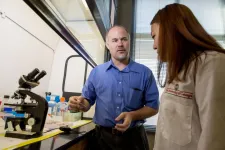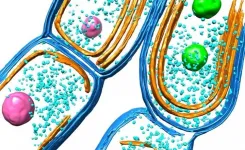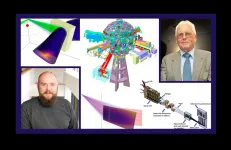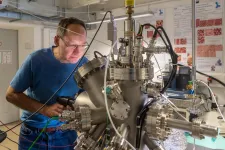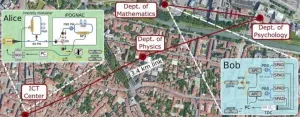(Press-News.org) The increased use of ridesharing apps was linked to a decrease in motor vehicle collisions and impaired driving convictions in Houston, according to published research by The University of Texas Health Science Center at Houston (UTHealth).
The findings were published today in JAMA Surgery.
Christopher Conner, MD, PhD, neurosurgery resident in the Vivian L. Smith Department of Neurosurgery at McGovern Medical School at UTHealth and the study's lead author, said the research is timely as more individuals are utilizing ridesharing apps.
"Automobile accidents are the leading cause of death and disability among young people, so anything we can do to reduce those incidents is going to have a massive effect," he said.
For the study, researchers asked rideshare app companies that were in Houston as early as 2014, to supply their utilization rates. Uber responded, submitting data from 2014, when they first started service in Houston, through 2018.
Researchers also collected data from the Red Duke Trauma Institute at Memorial Hermann Hospital-Texas Medical Center and Harris Health Ben Taub Hospital in Houston comparing rates of patients admitted for injuries sustained in a motor vehicle accident from 2007-2013 and 2014-2018. Memorial Hermann-TMC and Ben Taub are the only American College of Surgeons Level 1 trauma centers in Houston. All patients admitted as a result of a motor vehicle accident were included in the data set.
Data was also collected on impaired driving convictions from the Harris County District Attorney's Office from 2007-2019, limited to cases resulting in a conviction or probation.
The study found that rideshare volume had a significant correlation with the incidence of motor vehicle-related trauma, with a reduction in the rate of incidence by one-third for every 1,000 rides. The rate continued to drop as more rides occurred. The age group with the most significant decrease in motor vehicle-related trauma were those under the age of 30, with a reduction rate of almost 39%.
Impaired driving convictions also reduced in the years following the introduction of Uber into Houston. Before 2014, there were an average of 22.5 impaired driving convictions in Houston daily. After 2014, impaired driving convictions decreased to an average of 19 per day.
"I think this was the biggest takeaway from the study. The data shows that ridesharing companies can decrease these incidents because they give young people an alternative to driving drunk," Conner said, adding that he hoped the results will allow people to see that anyone can be affected by a motor vehicle collision, but that they do have another option that has been proven to reduce their risk of injury, death, or impaired driving conviction.
The greatest number of motor vehicle collisions occurred on Friday and Saturday nights between 9 p.m. and 3 a.m. Comparing the date from before and after 2014 revealed an almost 24% decrease in motor vehicle collision traumas and the number of impaired driving convictions during those hours.
Conner is hopeful this study will open the door to further trauma research. "It is an area that has been really understudied," he said.
INFORMATION:
McGovern Medical School co-authors from the Vivian L. Smith Department of Neurosurgery were Ryan McCormack, MD, PhD, neurosurgery resident; Samantha Parker, MD, neurosurgery resident; and Ryan Kitagawa MD, associate professor of neurosurgery. Other McGovern Medical School co-authors were Hunter Ray, MD, vascular surgery resident in the Department of Cardiothoracic and Vascular Surgery; Xu Zhang, PhD, professor of clinical and translational sciences in the Department of Internal Medicine; John Harvin, MD, associate professor of acute care surgery in the Department of Surgery; and medical student Jacqueline Dickey, BSA. Conner, Ray, Parker, and Kitagawa see patients at UTHealth Neurosciences.
Other co-authors were from Baylor College of Medicine in Houston.
The study was funded by grants from the HeadStrong Brain Injury Foundation and Alpha Omega Alpha.
Prostate cancer is the second most common cancer among men, according to the American Cancer Society. It's also one of the trickiest cancers to diagnose and treat.
But new research from the University of Georgia has identified a protein that appears to prevent the cancer from spreading to and colonizing the bone, providing a new target for future therapeutics.
"Unfortunately, prostate cancer that has spread to the bone is very aggressive, often lethal and very difficult to treat," said Brian Cummings, corresponding author of the study and head of the College of Pharmacy's pharmaceutical and biomedical sciences department. "Even in cases of successful treatment, the patient's quality of life is severely lessened due to bone loss."
Prostate cancer that hasn't spread beyond nearby ...
There are still many unsolved mysteries about the human brain and its development. Now, a novel study published in Frontiers in Psychiatry sheds new light on the neurobiological origins of our individual traits.
Functional connectivity is the coordinated activity - activation or deactivation - through time between separate brain regions, regardless of their physical closeness or the type of neural connections between them. Changes in functional connectivity can be a sign of mental health disorders such as depression, eating disorders, and schizophrenia, and are thought to have developmental origins.
We know that mental health is characterized by three functional brain networks. The first is hypoconnectivity ...
People who have a high sensation-seeking personality trait may be more likely to develop an addiction to cocaine, according to a Rutgers study.
"Although many people try illicit drugs like cocaine or heroin, only a small proportion develop an addiction," said lead author Morgan James, a member of the Rutgers Brain Health Institute and an assistant professor in the department of psychiatry at Rutgers Robert Wood Johnson Medical School. "The interaction found between sensation-seeking traits and the drug-taking experience show that predisposition to addiction has a genetic basis, and that this interacts with environmental factors such as patterns of drug use. The sensation-seeking trait was predictive of rats' likelihood to exhibit stronger ...
For older adults, participating in social activities can protect against physical and mental signs of aging, but it may also pose risks, especially for women.
A new analysis of national data led by UC San Francisco found that older women who were broadly engaged in social activities before the COVID pandemic had 76 percent higher odds of experiencing emotional abuse or mistreatment than women who were less engaged.
The paper is published June 9, 2021 in the Journal of the American Geriatrics Society.
"Given widespread discussion about the negative effects of social isolation of ...
Research from the University of Washington shows that endangered blue whales are present and singing off the southwest coast of India. The results suggest that conservation measures should include this region, which is considering expanding tourism.
Analysis of recordings from late 2018 to early 2020 in Lakshadweep, an archipelago of 36 low-lying islands west of the Indian state of Kerala, detected whales with a peak activity in April and May.
The study was published in May in the journal Marine Mammal Science.
"The presence of blue whales in Indian waters is well known from several strandings and some live sightings of blue whales," said lead author Divya Panicker, a ...
A new study conducted by the researchers at the University of Liverpool reveals how the ancient photosynthetic organisms - cyanobacteria - evolve their photosynthetic machinery and organise their photosynthetic membrane architecture for the efficient capture of solar light and energy transduction.
Oxygenic photosynthesis, carried out by plants, algae, and cyanobacteria, produces energy and oxygen for life on Earth and is arguably the most important biological process. Cyanobacteria are among the earliest phototrophs that can perform oxygenic photosynthesis and make significant contributions to the Earth's atmosphere and primary production.
Light-dependent photosynthetic reactions are performed by a set of photosynthetic ...
Laser-produced high energy density plasmas, akin to those found in stars, nuclear explosions, and the core of giant planets, may be the most extreme state of matter created on Earth. Now scientists at the U.S. Department of Energy's (DOE) Princeton Plasma Physics Laboratory (PPPL), building on nearly a decade of collaboration with the National Ignition Facility (NIF) at the DOE's Lawrence Livermore National Laboratory (LLNL), have designed a novel X-ray crystal spectrometer to provide high-resolution measurements of a challenging feature of NIF-produced HED plasmas.
Most powerful lasers
The ...
An international research team led by members from the Technical University of Munich, the Deutsches Museum, Munich, and the Swedish Linköping University has developed a method to manufacture two-dimensional polymers with the thickness of a single molecule. The polymers are formed on a surface by the action of light. The discovery paves the way to new ultrathin and functional materials.
The quest for new two-dimensional materials has rapidly intensified after the discovery of graphene - a supermaterial whose excellent properties include high conductivity and strength, making it incredibly versatile.
Two main ...
WASHINGTON -- In a new study, researchers demonstrate an automated, easy-to-operate quantum key distribution (QKD) system using the fiber network in the city of Padua, Italy. The field test represents an important step toward implementing this highly secure quantum communication technology using the type of communication networks already in place in many regions around the world.
QKD offers impenetrable encryption for data communication because it uses the quantum properties of light to generate secure random keys for encrypting and decrypting data.
"QKD can be useful in any situation where security is paramount because it offers unconditional security for the key exchange process," ...
Two gene variants found in African American women may explain why they are more likely to be diagnosed with triple negative breast cancer (TNBC) than white women of European ancestry, according to Weill Cornell Medicine and NewYork-Presbyterian investigators. The study findings may have implications for developing better risk assessment tools for TNBC in African American women and for understanding why they have poorer TNBC outcomes.
In a study, published April 29 in Scientific Reports, the investigators found that a version of the ANKLE1 gene that can be protective against TNBC is less likely to be found in African American women than white women of European ancestry. In addition, African American women with a mutation in the Duffy gene, which plays a role in inflammation, ...

